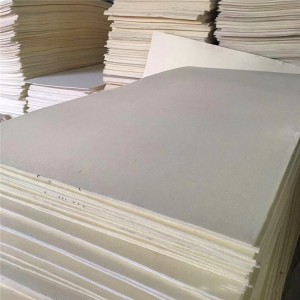In the ever – evolving world of architecture, sustainability has become a top priority. Architects and designers are constantly on the lookout for innovative, eco – friendly materials that can reduce the environmental impact of buildings while still meeting high standards of functionality and aesthetics. Wool felt has emerged as a promising solution, offering a range of benefits that make it an ideal material for modern sustainable architecture.
One of the key advantages of wool felt in architecture is its excellent insulation properties. Wool is a natural insulator, and wool felt can effectively trap air, providing both thermal and acoustic insulation. In buildings, wool felt can be used in walls, roofs, and floors to reduce heat loss in the winter and keep the interior cool in the summer. This helps to lower energy consumption for heating and cooling, resulting in significant cost savings and a reduced carbon footprint. Additionally, wool felt’s acoustic insulation properties can create a more comfortable and peaceful indoor environment by reducing noise transmission from outside and between different areas of the building.
Another important aspect of wool felt’s sustainability is its natural and renewable nature. Wool is a by – product of the sheep farming industry, and using wool felt in architecture helps to utilize a resource that would otherwise go to waste. Unlike synthetic insulation materials, which are often made from non – renewable fossil fuels, wool felt is biodegradable. At the end of a building’s life cycle, wool felt can be recycled or returned to the earth without causing harm to the environment.
Wool felt also offers design flexibility in architecture. It comes in a variety of colors, thicknesses, and textures, allowing architects and designers to incorporate it into different design styles and aesthetics. Wool felt can be used as wall panels, ceiling tiles, or even as decorative elements, adding a touch of warmth and texture to the interior spaces. Its soft, natural appearance can create a more inviting and comfortable atmosphere, in contrast to the cold, hard surfaces often associated with modern architecture.
In addition to its insulation and design benefits, wool felt has other practical applications in architecture. It can be used as a protective layer for building materials, preventing damage from moisture, pests, and mechanical wear. Wool felt can also be used in green roof systems, providing a suitable growing medium for plants and helping to improve air quality, reduce stormwater runoff, and enhance the urban landscape.
Several notable architectural projects around the world have already embraced wool felt as a sustainable building material. These projects serve as examples of how wool felt can be effectively integrated into modern architecture to create environmentally friendly, energy – efficient, and aesthetically pleasing buildings. As the demand for sustainable architecture continues to grow, more architects and designers are likely to explore the potential of wool felt, further expanding its use in the construction industry.

Post time: May-30-2025
